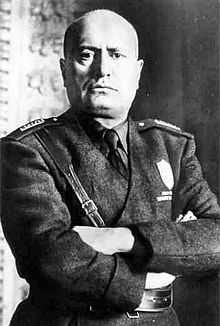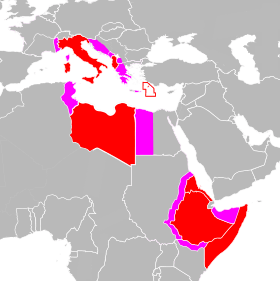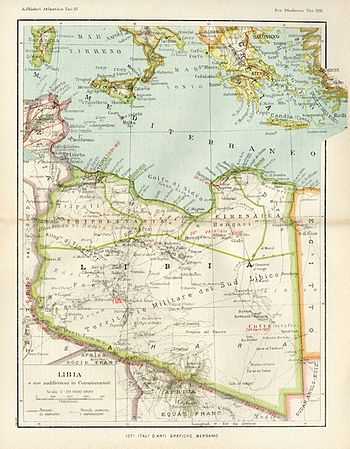Italian Empire
Italian Empire |
||||
|---|---|---|---|---|
|
||||
.svg.png) Italy Colonies in 1939
Territories occupied during World War II |
||||
The Italian Empire (Italian: Impero Italiano) was created after the Kingdom of Italy joined other European powers in establishing colonies overseas during the Scramble for Africa. Modern Italy, as a unified state, had only existed from 1861. By this time, France, Spain, Portugal, Britain and the Netherlands had been carving out large empires for several hundred years. One of the last remaining areas open to colonisation was on the African continent.
By the outbreak of World War I in 1914, Italy had annexed Eritrea, Somalia, Libya and the Dodecanese Islands; it was also one of the European concession holders in Tientsin. Italy was defeated in its first attempt to conquer Ethiopia in the First Italo-Ethiopian War of 1895–1896 with Ethiopia receiving modern weapons and support from Russia and France, but succeeded in occupying it in the Second Italo-Ethiopian War of 1935–1936.[1] During World War I, the Italian army captured Albania, which was declared an Italian protectorate in 1917,[2] and, by the end of hostilities in November 1918, had captured the entire portion of Dalmatia that had been guaranteed to Italy by the Treaty of London.[3] The Entente Allies forced Italy to concede much of its captured territory in Dalmatia to the new state of Yugoslavia, with Italy only keeping the city of Zadar (Zara); in 1920, they also pressured Italy to remove its army from Albania.
The Fascist government under Italian dictator Benito Mussolini, which came to power in 1922, sought to increase the size of the empire further. In the late 1930s, Mussolini intended to increase Italy's power and influence by seeking to break up the Anglo-French alliance by being more conciliatory and cooperative with Britain, while being aggressive towards France.[4] Italy sided with Germany during World War II and initially enjoyed successes. Italy occupied Albania, part of Greece, Croatia, Slovenia and part of Egypt, with German military assistance after faltering campaigns in Greece and North Africa.
History
Birth of a nation and scramble for an empire (1848–1914)
The creation of the Kingdom of Italy was the result of concerted efforts by Italian nationalists and monarchists loyal to the House of Savoy to establish a united kingdom encompassing the entire Italian Peninsula.
After the Revolutions of 1848, the apparent leader of the Italian unification movement was the Italian revolutionary Giuseppe Garibaldi. He was popular amongst southern Italians and was renowned throughout the world for his extremely loyal followers.[5] Garibaldi led the Italian republican drive for unification in southern Italy, but the northern Italian monarchy of the House of Savoy in the Kingdom of Sardinia, a de facto Piedmontese state, whose government was led by Camillo Benso, conte di Cavour, also had ambitions of establishing a united Italian state. Though the kingdom had no physical connection to Rome (seen by all as the natural capital of Italy, but still capital of the Papal States), the kingdom had successfully challenged Austria in the Second Italian War of Independence, liberating Lombardy-Venetia from Austrian rule. The kingdom had also established important alliances that helped it improve the possibility of Italian unification, such as Britain and the Second French Empire in the Crimean War. Sardinia was dependent on France being willing to protect it and, in 1860, Sardinia was forced to cede territory to France to maintain relations, including Savoy and Garibaldi's birthplace, Nice.
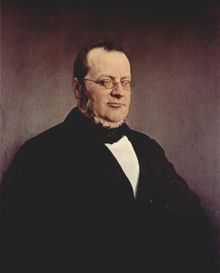
Cavour moved to challenge republican unification efforts by Garibaldi by organizing popular revolts in the Papal States. He used these revolts as a pretext to invade the country, even though the invasion angered the Catholics, whom he told that the invasion was an effort to protect the Roman Catholic Church from the anti-clerical secularist nationalist republicans of Garibaldi. Only a small portion of the Papal States around Rome remained in the control of Pope Pius IX.[6] Despite their differences, Cavour agreed to include Garibaldi's Southern Italy, allowing it to join the union with Piedmont-Sardinia in 1860. Subsequently, on 18 February 1861 (officially proclaiming it on March 17, 1861), the Parliament declared the creation of the Kingdom of Italy, which comprised both Northern Italy and Southern Italy. King Victor Emmanuel II of Piedmont-Sardinia, from the House of Savoy, was then declared King of Italy, though he did not renumber himself with the assumption of the new title. This title had been out of use since the abdication of Napoleon I of France on 6 April 1814.
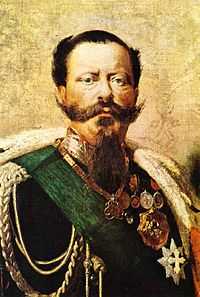
Following the unification of most of Italy, tensions between the monarchists and republicans erupted. In April 1861, Garibaldi entered the Italian parliament and challenged Cavour's leadership of the government, accusing him of dividing Italy and spoke of the threat of civil war between the Kingdom in the north and Garibaldi's forces in the south. On 6 June 1861, the Kingdom's strongman, Cavour, died. During the ensuing political instability, Garibaldi and the republicans became increasingly revolutionary in tone. Garibaldi's arrest in 1862 set off worldwide controversy.[7]
.jpg)
In 1866, Otto von Bismarck, Minister President of Prussia, offered Victor Emmanuel II an alliance with the Kingdom of Prussia in the Austro-Prussian War. In exchange, Prussia would allow Italy to annex Austrian-controlled Veneto. King Emmanuel agreed to the alliance and the Third Italian War of Independence began. Italy fared poorly in the war, with a badly organized military against Austria, but Prussia's victory allowed Italy to annex at least Venice. The one major obstacle to Italian unity remained Rome.
In 1870, Prussia went to war with France, starting the Franco-Prussian War. To keep the large Prussian Army at bay, France abandoned its positions in Rome, which protected the remnants of the Papal States and Pius IX, in order to fight the Prussians. Italy benefited from Prussia's victory against France by being able to take over the Papal States from French authority. Rome was captured by the kingdom of Italy despite several battles and guerilla-like warfare by Papal Zouaves and official troops of the Holy See against the Italian invaders. Thus, on 20 September 1870, Italian unification was completed, and shortly afterwards Italy's capital was moved to Rome. Economic conditions in the united Italy were poor:,[8] there was little industry or transportation facilities, extreme poverty (especially in the Mezzogiorno), high illiteracy, and only a small percentage of wealthy Italians had the right to vote. The unification movement had largely been dependent on the support of foreign powers and remained so afterwards.
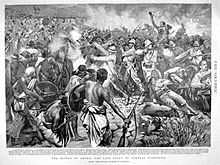
Following the capture of Rome, in 1870, from the combined forces of Napoleon III's French troops, Papal troops and Zouaves, relations between Italy and the Vatican remained sour for the next sixty years with the Popes declaring themselves to be prisoners in the Vatican.
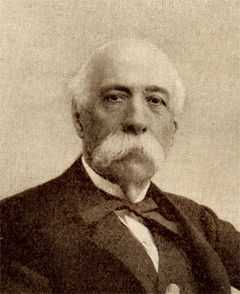
The unification of Italy brought with it a belief that Italy deserved its own overseas empire, alongside those of the other powers of Europe, and a rekindling of the notion of mare nostrum.[9] However, Italy had arrived late to the colonial race, and its relative weakness in international affairs meant that it was dependent on the acquiescence of Britain, France and Germany towards its empire-building.[10]
Italy had long considered the Ottoman province of Tunisia, where a large community of Tunisian Italians lived, within its economic sphere of influence. It did not consider annexing it until 1879, when it became apparent that Britain and Germany were encouraging France to add it to its colonial holdings in North Africa.[11] A last minute offer by Italy to share Tunisia between the two countries was refused, and France, confident in German support, ordered its troops in from French Algeria, imposing a protectorate over Tunisia in May 1881 under the Treaty of Bardo.[12] The shock of the "Tunisian bombshell", as it was referred to in the Italian press, and the sense of Italy's isolation in Europe, led it into signing the Triple Alliance in 1882 with Germany and Austria-Hungary.[13]
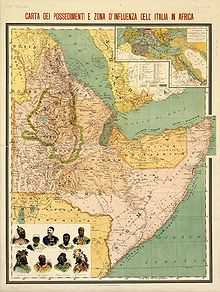
Italy's search for colonies continued until February 1886, when, by secret agreement with Britain, it annexed the port of Massawa in Eritrea on the Red Sea from the crumbling Egyptian Empire. Italian annexation of Massawa denied the Ethiopian Empire of Yohannes IV an outlet to the sea [14] and prevented any expansion of French Somaliland.[15] At the same time, Italy occupied territory on the south side of the horn of Africa, forming what would become Italian Somaliland.[16] However, Italy coveted Ethiopia itself and, in 1887, Italian Prime Minister Agostino Depretis ordered an invasion. This invasion was halted after the loss of five hundred Italian troops at the Battle of Dogali.[17] Depretis's successor, Prime Minister Francesco Crispi signed the Treaty of Wuchale in 1889 with Menelik II, the new emperor. This treaty ceded Ethiopian territory around Massawa to Italy to form the colony of Eritrea, and — at least, according to the Italian version of the treaty — made Ethiopia an Italian protectorate.[18]
Relations between Italy and Menelik deteriorated over the next few years until the First Italo-Ethiopian War broke out in 1895, when Crispi ordered Italian troops into the country. Outnumbered and poorly equipped,[19] the result was a humiliating defeat for Italy at the hands of Ethiopian forces at the Battle of Adwa in 1896, the first defeat by an African indigenous people of a colonial power,[20] and a major blow to the Italian empire in East Africa, as well as to Italian prestige.
.svg.png)
On 7 September 1901, a concession in Tientsin was ceded to the Kingdom of Italy by Imperial China. It was administered by Rome's Consul. Several ships of the Italian Royal Navy (Regia Marina) were based at Tientsin.[21]
A wave of nationalism that swept Italy at the turn of the 20th century led to the founding of the Italian Nationalist Association, which pressed for the expansion of Italy's empire. Newspapers were filled with talk of revenge for the humiliations suffered in Ethiopia at the end of the previous century, and of nostalgia for the Roman era. Libya, it was suggested, as an ex-Roman colony, should be "taken back" to provide a solution to the problems of southern Italy's population growth. Fearful of being excluded altogether from North Africa by Britain and France, and mindful of public opinion, Prime Minister Giovanni Giolitti ordered the declaration of war on the Ottoman Empire, of which Libya was part, in October 1911.[22] As a result of the Italo-Turkish War, Italy gained Libya and the Dodecanese Islands.
World War I and aftermath (1914–1922)
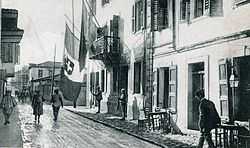
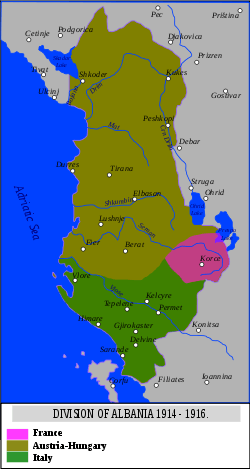
In 1915, Italy agreed to enter World War I on the side of Britain and France; and, in return, was guaranteed territory at the Treaty of London, both in Europe and, should Britain and France gain Germany's African possessions, in Africa.[23]
Prior to direct intervention in World War I, Italy occupied the Albanian port of Vlorë in December 1914.[2] In the fall of 1916, Italy started to occupy southern Albania.[2] In 1916, Italian forces recruited Albanian irregulars to serve alongside them.[2] Italy, with permission of the Allied command, occupied Northern Epirus on 23 August 1916, forcing the neutralist Greek Army to withdraw its occupation forces from there.[2] In June 1917, Italy proclaimed central and southern Albania as a protectorate of Italy while Northern Albania was allocated to the states of Serbia and Montenegro.[2] By 31 October 1918, French and Italian forces expelled the Austro-Hungarian Army from Albania.[2]
Dalmatia was a strategic region during World War I that both Italy and Serbia intended to seize from Austria-Hungary. The Treaty of London guaranteed Italy the right to annex a large portion of Dalmatia in exchange for Italy's participation on the Allied side. From 5–6 November 1918, Italian forces were reported to have reached Lissa, Lagosta, Sebenico, and other localities on the Dalmatian coast.[24] By the end of hostilities in November 1918, the Italian military had seized control of the entire portion of Dalmatia that had been guaranteed to Italy by the Treaty of London and by 17 November had seized Fiume as well.[3] In 1918, Admiral Enrico Millo declared himself Italy's Governor of Dalmatia.[3] Famous Italian nationalist Gabriele d'Annunzio supported the seizure of Dalmatia, and proceeded to Zara in an Italian warship in December 1918.[25]
However, at the concluding Treaty of Versailles in 1919, Italy received far less in Europe than had been promised, and none overseas. In April 1920, it was agreed between the British and Italian foreign ministers that Jubaland would be Italy's compensation, but Britain held back on the deal for several years, aiming to use it as leverage to force Italy to cede the Dodecanese to Greece.[26]
Fascism and the Italian Empire (1922–1940)
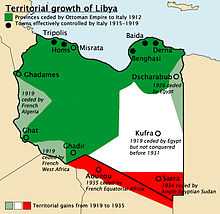


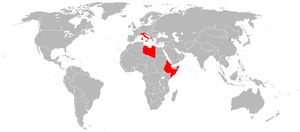
In 1922, the leader of the Italian fascist movement, Benito Mussolini, became Prime Minister of Italy after the March on Rome. Mussolini resolved the question of sovereignty over the Dodecanese at the 1923 Treaty of Lausanne, which formalized Italian administration of both Libya and the Dodecanese Islands, in return for a payment to Turkey, the successor state to the Ottoman Empire, though he failed in an attempt to extract a mandate of a portion of Iraq from Britain.
The month following the ratification of the Lausanne treaty, Mussolini ordered the invasion of the Greek island of Corfu after the murder of an Italian general at the Greco-Albanian border. The Italian press supported the move, noting that Corfu had been a possession of the Republic of Venice for four hundred years.[27] Though the matter was taken by Greece to the League of Nations, Mussolini successfully resisted its pressure, and it was only the threat of war with Britain that convinced him to evacuate Italian troops,[28] in return for reparations from Greece. The confrontation over Corfu, and Italy's obvious determination never to give up sovereignty over the Dodecanese, led Britain and Italy to resolve the question of Jubaland in 1924: it was merged into Italian Somaliland.[29]
To the west of Italy, the Fascists claimed that the territories of Corsica, Nice, and Savoy held by France, were Italian lands.[30][31]
In Eastern Europe, the Fascist regime claimed Dalmatia and held imperial designs on Albania, Slovenia, Croatia, Bosnia and Herzegovina, Vardar Macedonia, and Greece based on the precedent of previous Roman dominance in these regions.[32] In the Balkans, Dalmatia and Slovenia were to be directly annexed into Italy while the remainder of the Balkans was to be transformed into Italian client states.[33] The regime also sought to establish protective patron-client relationships with Austria, Hungary, Romania, and Bulgaria.[32]
In the 1930s, the Fascist regime had designs on the largely Italian-populated region of Ticino and part of the largely Romansch-populated region of Graubünden in Switzerland (the Romansch are a people with an Latin-based dialect).[34] The Fascist regime accused the Swiss government of oppressing the Romansch people in Graubünden.[34] Mussolini argued that Romansch was an Italian dialect and thus Graubünden should be incorporated into Italy.[35] In February 1938, the Swiss government responded to the Italian threat to Switzerland's territorial integrity by establishing Romansch as a "national language", but not an official language.[34]
Italy's stance towards Spain and Portugal shifted between the 1920s and the 1940s. The Fascist regime in the 1920s held deep antagonism towards Spain due to the Spanish government's pro-French foreign policy. Spain's pro-French alignment was re-affirmed by the new regime of Miguel Primo de Rivera, which rose to power in the 1920s. In 1926, Mussolini began aiding the Catalan separatist movement, which was led by Francesc Macià, against the Spanish government.[36] With the rise of a pro-French left-wing Republican government replacing the Spanish monarchy, Spanish monarchists and fascists repeatedly approached Italy for aid in overthrowing the Republican government, in which Italy agreed to support them in order to establish a pro-Italian government in Spain.[36] In July 1936, Francisco Franco of the Nationalist faction in the Spanish Civil War requested Italian support against the ruling Republican faction, and guaranteed that, if Italy supported the Nationalists, "future relations would be more than friendly" and that Italian support "would have permitted the influence of Rome to prevail over that of Berlin in the future politics of Spain" essentially saying that Spain would be a client state of Italy.[37] In the 1920s, Italy regarded Portugal as a weak country that was unbecoming of a colonial power due to its weak hold on its colonies and mismanagement of them, and, as such, Italy desired to annex Portugal's colonies.[38] Italy's relations with Portugal were influenced by the rise to power of the authoritarian conservative nationalist regime of Salazar, which borrowed fascist methods; though Salazar upheld Portugal's traditional alliance with Britain.[38]

During the late 1920s, imperial expansion became an increasingly favoured theme in Mussolini's speeches.[39] He argued that Italy needed an outlet for its "surplus population", and that it would therefore be in other countries' best interests to aid in this expansion.[39]
One day after the United Kingdom signed the Anglo-Italian Easter Pact, Mussolini and foreign minister Ciano issued demands for concessions in the Mediterranean by France, particularly regarding Corsica, Djibouti, Tunisia and the French-run Suez Canal.[40] Three weeks later, Mussolini told Ciano that he intended for Italy to demand a new border with France at the river Var and running along the Alps mountains, though not Savoy that had been claimed in the past because it was outside the circle of the Alps; as well as demanding Ticino from Switzerland; and an Italian takeover of Albania.[40] Mussolini professed that Italy would only be able to "breathe easily" if it had acquired a contiguous colonial domain in Africa from the Atlantic to the Indian Oceans, and when ten million Italians had settled in them.[39] In 1938, Italy demanded a sphere of influence in the Suez Canal in Egypt, specifically demanding that the French-dominated Suez Canal Company accept an Italian representative on its board of directors.[41] Italy opposed the French monopoly over the Suez Canal because, under the French-dominated Suez Canal Company, all Italian merchant traffic to its colony of Italian East Africa was forced to pay tolls on entering the canal.[41]
Amongst Mussolini's (not-publicly proclaimed) aims were that Italy had to become the dominant power in the Mediterranean that would be able to challenge France or Britain, as well as attain access to the Atlantic and Indian Oceans.[39] Mussolini alleged that Italy required uncontested access to the world's oceans and shipping lanes to ensure its national sovereignty.[42] This was elaborated on in a document he later drew up in 1939 called "The March to the Oceans", and included in the official records of a meeting of the Grand Council of Fascism.[42] This text asserted that maritime position determined a nation's independence: countries with free access to the high seas were independent; while those who lacked this, were not. Italy, which only had access to an inland sea without French and British acquiescence, was only a "semi-independent nation", and alleged to be a "prisoner in the Mediterranean":[42]
"The bars of this prison are Corsica, Tunisia, Malta, and Cyprus. The guards of this prison are Gibraltar and Suez. Corsica is a pistol pointed at the heart of Italy; Tunisia at Sicily. Malta and Cyprus constitute a threat to all our positions in the eastern and western Mediterrean. Greece, Turkey, and Egypt have been ready to form a chain with Great Britain and to complete the politico-military encirclement of Italy. Thus Greece, Turkey, and Egypt must be considered vital enemies of Italy's expansion ...The aim of Italian policy, which cannot have, and does not have continental objectives of a European territorial nature except Albania, is first of all to break the bars of this prison ... Once the bars are broken, Italian policy can only have one motto - to march to the oceans."
This goal entailed a vast programme of colonial expansion toward Ethiopia in the east and Nigeria, Cameroon, and the Guinea coast in the west.[39]
In both 1932 and 1935, Italy demanded a mandate of the former German Cameroon and a free hand in Ethiopia from France in return for Italian support against Germany (see Stresa Front).[43] This was refused by French Prime Minister Édouard Herriot, who was not yet sufficiently worried about the prospect of a German resurgence.[43]
During the Spanish Civil War, Italy intervened with the intention of annexing the Balearic Islands and Ceuta and creating a client state in Spain.[44] Italy sought the acquisition of the Balearic Islands due to its strategic position - Italy could use the islands as a base to disrupt the lines of communication between France and its North African colonies and between British Gibraltar and Malta.[45] Prior to all-out intervention by Italy in Spain, Mussolini authorized "volunteers" to go to Spain, resulting in the Fascist Blackshirt leader Arconovaldo Bonaccorsi (also known as "Count Rossi") leading a raiding force that landed on, and seized control of, Majorca, the largest Balearic island.[46] Bonaccorsi was sent to Majorca to be the Italian proconsul in the Balearics.[46] Bonaccorsi proclaimed that Italy would occupy the island in perpetuity.[47] Bonaccorsi initiated a brutal reign of terror in Majorca, arranging the murder of 3,000 people on the island, including emptying its prisons by having all prisoners shot.[46] Bonaccorsi was later rewarded by Italy for his activity in Majorca.[46] During the aftermath of the Battle of Majorca, and the subsequent Falangist terror, the commander of the Italian forces, Arconovaldo Bonaccorsi renamed the main street of Palma de Majorca Via Roma, and adorned it with statues of Roman eagles.[48] Italian flags were flown over the island.[49] Italian forces dominated Majorca, with Italians openly manning the Majorcan airfields at Alcúdia and Palma, as well as Italian warships being based in the harbour of Palma.[50] Italian forces launched air raids from Majorca against Republican-held cities on mainland Spain.[49] The buildup of Italian bomber aircraft on the island's airfields in late 1937 was viewed by France as provocative and threatening, and France responded by sending forces to the British garrison base in Mahón.[4] After the victory by Franco and the Nationalists in the war, Allied intelligence was informed that, in April 1940, Italy was pressuring Spain to permit an Italian occupation of the Balearic Islands.[51]
During the 1930s, emigration to the colonies was encouraged due to a belief that Italy was suffering from "excess population". Most went to Libya, which, by 1938, contained 89,098 Italians, primarily concentrated in the coastal cities of Tripoli and Benghazi. The coastline of Libya was referred to as Italy's "Fourth Shore" (in Italian: quarta sponda).
.svg.png)
There was emigration to Italian East Africa as well. According to the 1931 census, there were 4,188 Italians in Eritrea and 1,631 in Italian Somaliland.,[52] But, by 1939, their number increased to more than 75,000 in Italian Eritrea and more than 50,000 in Somalia. During the five-year occupation of Ethiopia, roughly 300,000 Italians were absorbed into the conquered East African Empire; however, fully one-third of these were military personnel.[53] After a difficult period under Rodolfo Graziani, Italian East Africa was ruled more successfully by Amedeo, 3rd Duke of Aosta. The Duke brought a program of progressive improvement that included 2,000 miles of new paved roads, 25 hospitals, 14 hotels, dozens of post offices, telephone exchanges, aqueducts, schools, and shops.[54] Even so, the tight grip on security that the Italians maintained did not extend initially far beyond the main population centers of Ethiopia (but, by early 1940, nearly three-quarters of Abyssinian territory was fully Italian-controlled).[55]
In 1939, Italy invaded and captured Albania and made it a part of the Italian Empire as a separate kingdom in personal union with the Italian crown. The region of modern-day Albania had been an early part of the Roman Empire, which had actually been held before northern parts of Italy had been taken by the Romans, but had long since been populated by Albanians, even though Italy had retained strong links with the Albanian leadership and considered it firmly within its sphere of influence.[56] It is possible that Mussolini simply wanted a spectacular success over a smaller neighbour to match Germany's absorption of Austria and Czechoslovakia.[56] Italian King Victor Emmanuel III took the Albanian crown, and a fascist government under Shefqet Verlaci was established to rule over Albania.
World War II (1940–1943)
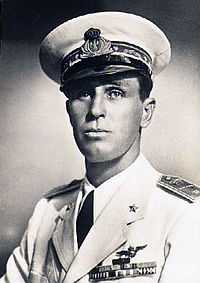
Mussolini entered World War II on the side of Adolf Hitler with plans to enlarge Italy's territorial holdings. He had designs on an area of western Yugoslavia, southern France, Corsica, Malta, Tunisia, part of Algeria, an Atlantic port in Morocco, French Somaliland and British Egypt and Sudan.[58] Mussolini also mentioned to Italo Balbo his ambitions of capturing British and French territories in the Cameroons and founding an Italian Cameroon, in the hope that Italy could establish a colony on the Atlantic coast of Africa.
On 10 June 1940, Mussolini declared war on Britain and France. Both countries had been at war with Nazi Germany since September of the previous year. Mussolini's troops invaded southern France, but an armistice was soon signed between France and Germany. As a result, Italian troops pressed no further than a few miles into France, with the city of Menton being the only considerable gain from the offensive. Two days later, a separate agreement between France and Italy ceded Nice and parts of the Savoy to Italy.[59]
In July 1940, Italian foreign minister Count Ciano presented Hitler with a document of Italy's demands that included: the annexation of Corsica, Nice, and Malta; protectorates in Tunisia and a buffer zone in Algeria; independence with Italian military presence and bases in Lebanon, Palestine, Syria, and Transjordan as well as expropriation of oil companies in those territories; military occupation of Aden, Perim and Sokotra; Cyprus given to Greece in exchange for Corfu and Ciamuria given to Italy; Italy is given British Somaliland, Djibuti, French Equatorial Africa up to Chad, as well as Ciano adding at the meeting that Italy wanted Kenya and Uganda as well.[60] Hitler accepted the document without any comment.[60]
In October 1940, keen to emulate the successes that Hitler was enjoying, Mussolini ordered the invasion of Greece from Albania. But, the invasion faltered, and the Italians were soon pushed back into Albania.[61]
In April 1941, Germany launched an invasion of Yugoslavia and then attacked Greece. Italy and other German allies supported both actions. The German and Italian armies overran Yugoslavia in about two weeks and, despite British support in Greece, the Axis troops overran that country by the end of April. The Italians gained control over portions of both occupied Yugoslavia and occupied Greece. A member of the House of Savoy, Prince Aimone, 4th Duke of Aosta, was appointed king of the newly created Independent State of Croatia.
During the height of the Battle of Britain, the Italians launched an attack on Egypt in the hope of capturing the Suez Canal. By 16 September 1940, the Italians advanced 60 miles across the border. However, in December, the British launched Operation Compass and, by February 1941, the British had cut off and captured the Italian 10th Army and had driven deep into Libya.[62] A German intervention prevented the fall of Libya and the combined Axis attacks drove the British back into Egypt until summer 1942, before being stopped at El Alamein. Allied intervention against Vichy French-held Morocco and Algeria created a two-front campaign. German and Italian forces had been concentrated at the time in Egypt. German and Italian forces entererd Tunisia in late 1942 in response, however forces in Egypt were soon forced to make a major retreat into Libya. By May 1943, Axis forces in Tunisia were forced to surrender.
The East African Campaign started with Italian advances into British-held Kenya, British Somaliland, and Sudan. In the summer of 1940, Italian armed forces successfully invaded all of British Somaliland.[63] But, by the end of 1941, the British had counter-attacked and pushed deep into Italian East Africa. By 5 May, Haile Selassie I of Ethiopia had returned to Addis Ababa to reclaim his throne. In November, the last organised Italian resistance ended with the fall of Gondar.[64] However, following the surrender of East Africa, some Italians conducted a guerrilla war which lasted for two more years.
In November 1942, when the Germans occupied Vichy France during Case Anton, Italian-occupied France was expanded with the occupation of Corsica.
Italian imperial possessions and recognized spheres of influence (1861–1943)
- Italian East Africa (colony, occupied territory, 1886 (first territory gained)/1936-1941)
- Eritrea (colony, 1886–1936, colonial governorate, 1936–1941)
- Somalia (colony, 1889–1936, colonial governorate, 1936–1941, annexed British Somaliland in 1940)
- Galla-Sidamo (colonial governorate founded from territory of Ethiopia, 1935–1941)
- Harar (colonial governorate founded from territory of Ethiopia, 1935–1941)
- Scioa (colonial governorate founded from territory of Ethiopia, 1935–1941)
- Tientsin Concession (colony, 1901-1943)
- Libya (colony, 1912–1943)
- Albania (de facto protectorate: 1917-1920, 1926–1939; de jure protectorate 1939-1943 which annexed southern parts of Yugoslavia in 1941 including most of Kosovo and parts of Vardar Macedonia and present-day Montenegro)
- Dodecanese Islands (territory (Italian: possedimento), 1919–1943)
- Section of Anatolia (sphere of influence, 1919–1923)
- Majorca (occupied territory, 1936–1939)
- Croatia (protectorate, 1941–1943)
- Montenegro (protectorate, 1941–1943)
- Tunisia (occupied territory, 1942–1943)
End of empire (1943–1960)
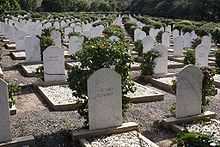
By the fall of 1943, the Italian Empire and all dreams of an Imperial Italy effectively came to an end.
On 7 May, the surrender of Axis forces in Tunisia and other near continuous Italian reversals, led King Victor Emmanuel III to plan the removal of Mussolini (who was officially not a dictator like Hitler, but a prime minister). Following the Invasion of Sicily, all support for Mussolini evaporated.
A meeting of the Grand Council of Fascism was held on 24 July. After the meeting had ended that night, Dino Grandi organized the opposition against Mussolini, who was subsequently deposed and arrested by the King on the following afternoon. Afterwards, Mussolini remained a prisoner of the King until 12 September, when, on the orders of Hitler, he was rescued by German paratroops and became leader of the Italian Social Republic.
Outwardly, the new Italian government under the King and Field Marshal Pietro Badoglio remained part of the Axis. But, secretly, it started negotiations with the Allies. On the eve of the American landings at Salerno, which started the Allied invasion of Italy, the new Italian government secretly signed an armistice with the Allies. On 8 September, the armistice was made public.
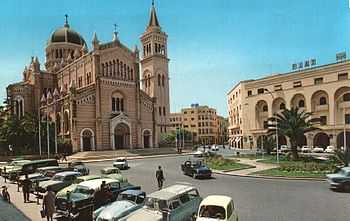
In Albania, Yugoslavia, the Dodecanese, and other territories still held by the Italians, German military forces successfully attacked their former Italian allies and ended Italy's rule.
Some Italian troops in the Balkans chose to join the resistance fighting against the Germans there. During the Dodecanese Campaign, an Allied attempt to take the Dodecanese with the cooperation of the Italian troops ended in total German victory.
In China, the Imperial Japanese Army occupied Italy's concession in Tientsin after getting news of the armistice. Later in 1943 the Italian Social Republic formally ceded control of the concession to Japan's puppet regime in China, the Reorganized National Government of China under Wang Jingwei.
In 1947, the Italian Republic formally lost all her overseas colonial possessions as a result of the Treaty of Peace with Italy. There were discussions to maintain Tripolitania (a province of Italian Libya) as the last Italian colony, but these were not successful.
In November 1949, Italian Somaliland was made a United Nations Trust Territory under Italian administration. This lasted until 1 July 1960, when Italian Somaliland was granted its independence and, together with British Somaliland, formed the Somali Republic.
Gallery
-

Massawa in 1890.
-

Italian mounted infantry in China during the Boxer Rebellion in 1900.
-

Italian soldiers near Tripoli during Italo-Turkish War.
-
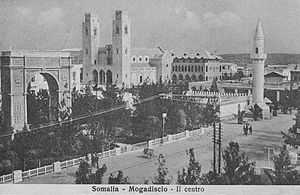
Mogadishu in 1936, with the Catholic Cathedral and the Triumphal Arch dedicated to Victor Emmanuel III.
-
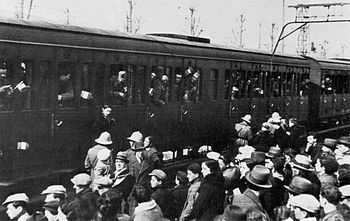
Italian soldiers leaving for the Second Italo-Abyssinian War.
-
King Victor Emmanuel III visits Benghazi in 1938.
-

1938 edition of the newspaper of the Tunisian branch of the National Fascist Party that represented Italians living in the French protectorate of Tunisia.
See also
|
|
References
Notes
- ↑ Robert G. Patman. The Soviet Union in the Horn of Africa: The Diplomacy of Intervention and Disengagement. Cambridge University Press, 2009.
- ↑ 2.0 2.1 2.2 2.3 2.4 2.5 2.6 Nigel Thomas. Armies in the Balkans 1914–18. Osprey Publishing, 2001. Pp. 17.
- ↑ 3.0 3.1 3.2 Paul O'Brien. Mussolini in the First World War: the Journalist, the Soldier, the Fascist. Oxford, England, UK; New York, New York, USA: Berg, 2005. Pp. 17.
- ↑ 4.0 4.1 Reynolds Mathewson Salerno. Vital Crossroads: Mediterranean Origins of the Second World War, 1935–1940. Cornell University, 2002. p 32.
- ↑ Dennis Mack Smith, Modern Italy; A Political History, (University of Michigan Press, 1997) p 15
- ↑ Smith (1997), pp 23–24
- ↑ Smith (1997), p 61
- ↑ (Smith (1997), pp95–96)
- ↑ Betts (1975), p.12
- ↑ Betts (1975), p.97
- ↑ Lowe, p.21
- ↑ Lowe, p.24
- ↑ Lowe, p.27
- ↑ Pakenham (1992), p.280
- ↑ Pakenham (1992), p.471
- ↑ Pakenham, p.281
- ↑ Killinger (2002), p.122
- ↑ Pakenham, p.470
- ↑ Killinger, p.122
- ↑ Pakenham (1992), p.7
- ↑ Map and information
- ↑ Killinger (2002), p.133
- ↑ Fry (2002), p.178
- ↑ Giuseppe Praga, Franco Luxardo. History of Dalmatia. Giardini, 1993. Pp. 281.
- ↑ A. Rossi. The Rise of Italian Fascism: 1918–1922. New York, New York, USA: Routledge, 2010. Pp. 47.
- ↑ Lowe, p.187
- ↑ Lowe, p.196
- ↑ Lowe, p.198
- ↑ Lowe, p.191,199
- ↑ Aristotle A. Kallis. Fascist Ideology: Expansionism in Italy and Germany 1922–1945. London, England; UK; New York, New York, USA: Routledge, 2000. P. 118.
- ↑ Mussolini Unleashed, 1939–1941: Politics and Strategy in Fascist Italy's Last War. Cambridge, England, UK: Cambridge University Press, 1986, 1999. P. 38.
- ↑ 32.0 32.1 Robert Bideleux, Ian Jeffries. A history of eastern Europe: crisis and change. London, England, UK; New York, New York, USA: Routledge, 1998. Pp. 467.
- ↑ Allan R. Millett, Williamson Murray. Military Effectiveness, Volume 2. New edition. New York, New York, USA: Cambridge University Press, 2010. P. 184.
- ↑ 34.0 34.1 34.2 John F. L. Ross. Neutrality and International Sanctions: Sweden, Switzerland, and Collective Security. ABC-CLIO, 1989. P. 91.
- ↑ Carl Skutsch. Encyclopedia of the world's minorities, Volume 3. London, England, UK: Routledge, 2005. P. 1027.
- ↑ 36.0 36.1 Robert H. Whealey. Hitler And Spain: The Nazi Role In The Spanish Civil War, 1936–1939. Paperback edition. Lexington, Kentucky, USA: University Press of Kentucky, 2005. P. 11.
- ↑ Sebastian Balfour, Paul Preston. Spain and the Great Powers in the Twentieth Century. London, England, UK; New York, New York, USA: Routledge, 1999. P. 152.
- ↑ 38.0 38.1 Lucas F. Bruyning, Joseph Theodoor Leerssen. Italy - Europe. Rodopi, 1990. P. 113.
- ↑ 39.0 39.1 39.2 39.3 39.4 Smith, Dennis Mack (1981). Mussolini, p. 170. Weidenfeld and Nicolson, London.
- ↑ 40.0 40.1 Reynolds Mathewson Salerno. Vital Crossroads: Mediterranean Origins of the Second World War, 1935–1940. Cornell University, 2002. p 82–83.
- ↑ 41.0 41.1 "French Army breaks a one-day strike and stands on guard against a land-hungry Italy", LIFE, 19 Dec 1938. Pp. 23.
- ↑ 42.0 42.1 42.2 42.3 Salerno, Reynolds Mathewson (2002). Vital crossroads: Mediterranean origins of the Second World War, 1935–1940, pp. 105–106. Cornell University Press
- ↑ 43.0 43.1 Burgwyn, James H. (1997). Italian foreign policy in the interwar period, 1918–1940, p. 68. Praeger Publishers.
- ↑ R. J. B. Bosworth. The Oxford handbook of fascism. Oxford, UK: Oxford University Press, 2009. Pp. 246.
- ↑ John J. Mearsheimer. The Tragedy of Great Power Politics. W. W. Norton & Company, 2003.
- ↑ 46.0 46.1 46.2 46.3 Mr. Ray Moseley. Mussolini's Shadow: The Double Life of Count Galeazzo Ciano. Yale University Press, 2000. Pp. 27.
- ↑ Raanan Rein. Spain and the Mediterranean Since 1898. London, England, UK; Portland, Oregon, USA: FRANK CASS, 1999. Pp. 155.
- ↑ Abulafia, David. 2001. The Great Sea: A Human History of the Mediterranean. Oxford University Press. p. 604
- ↑ 49.0 49.1 S. Balfour. Spain and the Great Powers in the Twentieth Century. Routledge, London, England, UK; New York, New York, USA: 1999. p. 172.
- ↑ LIFE 22 Nov 1937.
- ↑ The Road to Oran: Anglo-Franch Naval Relations, September 1939-July 1940. Pp. 24.
- ↑ Howard (1998), p.95.
- ↑ Barker, p.154
- ↑ Italian architectural planification of Africa Orientale Italiana (in Italian)
- ↑ Barker, p.152
- ↑ 56.0 56.1 Dickson (2001), pg. 69
- ↑ Time Magazine Aosta on Alag?
- ↑ Calvocoressi (1999) p.166
- ↑ Calvocoressi (1999) p.142
- ↑ 60.0 60.1 Santi Corvaja, Robert L. Miller. Hitler & Mussolini: The Secret Meetings. New York, New York, USA: Enigma Books, 2008. Pp. 132.
- ↑ Dickson (2001) p.100
- ↑ Dickson (2001) p.101
- ↑ Dickson (2001) p.103
- ↑ Jowett (2001) p.7
Bibliography
- Betts, Raymond (1975). The False Dawn: European Imperialism in the Nineteenth Century. University of Minnesota.
- Barker, A. J. (1971). The Rape of Ethiopia. Ballantine Books.
- Bosworth, R. J. B. (2005). Mussolini's Italy: Life Under the Fascist Dictatorship, 1915–1945. Penguin Books.
- Calvocoressi, Peter (1999). The Penguin History of the Second World War. Penguin.
- Dickson, Keith (2001). World War II For Dummies. Wiley Publishing, INC.
- Fry, Michael (2002). Guide to International Relations and Diplomacy. Continuum International Publishing Group.
- Howard, Michael (1998). The Oxford History of the Twentieth Century. Oxford University Press.
- Jowett, Philip (1995). Axis Forces in Yugoslavia 1941–45. Osprey Publishing.
- Jowett, Philip (2001). The Italian Army 1940–45 (2): Africa 1940–43. Osprey Publishing.
- Killinger, Charles (2002). The History of Italy. Greenwood Press.
- Lowe, C.J. (2002). Italian Foreign Policy 1870–1940. Routledge.
- Pakenham, Thomas (1992). The Scramble for Africa: White Man's Conquest of the Dark Continent from 1876 to 1912. Harper Collins.
- Mauri Arnaldo,(2004) Eritrea's early stages in monetary and banking development, "International Review of Economics", Vol. LI, n. 4, pp. 547–569.
- Maurizio Marinelli, Giovanni Andornino, Italy’s Encounter with Modern China: Imperial dreams, strategic ambitions, New York: Palgrave Macmillan, 2014.
External links
| Wikimedia Commons has media related to Colonialism of Italy. |
- Speech of the proclamation of the empire, 9 May 1936
- "La Somalia Italiana", written in 1925 by Romolo Onor (in Italian).
- "Atlante delle colonie italiane". Detailed Atlas of Italian colonies, written by Baratta Mario and Visintin Luigi in 1928 (in Italian).
- Ascari: I Leoni di Eritrea/Ascari: The Lions of Eritrea. Eritrea colonial history, Eritrean ascari pictures/photos galleries and videos, historical atlas.
| |||||||||||||||||
| ||||||||||||||||||||||||
.svg.png)
